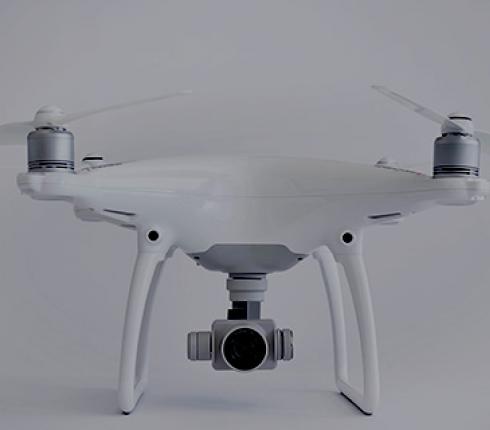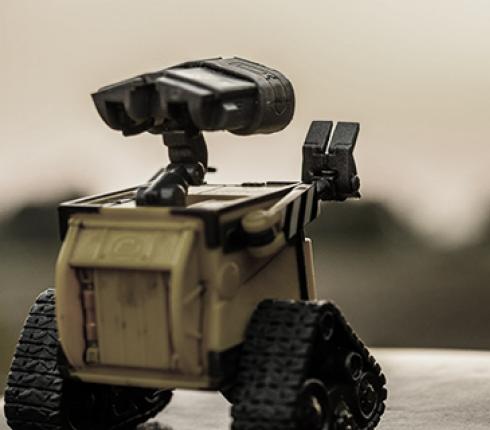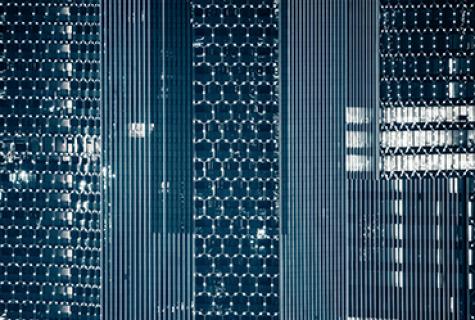Drones flying over the law
Unmanned Aerial Vehicles (UAVs), alternatively known as drones, are becoming more and more popular in the world and inevitably becoming part of our everyday lives.
A drone has no pilot on board and the control is carried out automatically via technical aids or pre-programmed flight. Therefore, drones have already been introduced to provide a number of services, including air photography and filming, freight transport, agriculture, infrastructure monitoring, mapping, law enforcement and rescue operations, military attacks and intelligence, border guard, security services, etc. However, it is necessary to solve the problems associated with them, such as the high cost of drones, flammability, short life and flight times, and the complexity of their management before widespread introduction of drones. However, the biggest obstacle to widespread deployment of UAVs are the legal problems that can be solved only by the legislator. The problem could be solved by introducing amendments to the legislation of the European Union and the legislation of different countries or creation of a separate drone law.
Finland Post was the first company in Europe to test the delivery of goods by drones in the city. Technically, the company would be ready to launch mail parcels as early as next year, but the use of new technology related to drones is also largely dependent on laws and regulations. Drones connect two worlds: on one hand is airspace, which is highly regulated for security and, on the other hand, the culture of start-ups, that is, young and innovative companies and organizations who want to seize new opportunities and gain market share. Companies that use drones to provide services would like to expand on the European market, but because legislation prevents the use of drones in the transport of parcels, the provision of such services is not yet possible. Despite the fact that drones have good manageability and the ability to maintain a stable altitude, according to current legislation, the use of drones for security reasons is limited or even prohibited, especially in densely populated areas.
The Amazon Drone Program, known as Prime Air, has already been involved in the development of drones since 2013, which is capable of delivering shipments directly to customer’s home. The biggest obstacle to Prime Air is not just the development of technology, but legal regulations. The Amazon-based autonomous drones are gathering enormous amounts of new data and the company has figured out how to put this information in to their advantage. An innovative solution created by Amazon enables drones to analyze clients' homes when placed on order and try to sell the products and services they need with the information they collect. For example, if the customer's roof is broken, then recommend a roof repair service. An advertisement for the product or service is sent to the customer via email, message or Amazon notice. The biggest obstacle to providing such a service is that the provision of the service can damage the privacy of individuals. Possibilities for the delivery of postal packets to customers include weather and the safety of drones. Amazon has also clashed with the British government to find options for using drones for legal goods delivery, but Amazon's plans are still far from commercial reality.
Amazon also filed a patent application to provide the service described above in the US. According to the patent application, the program is intended to analyze the information obtained by supplying items with UAVs. For example, instructions for sending an object are provided to the aircraft, and the unmanned aerial vehicle may be configured to store data when the object on delivery. Saved data can be stored in a computer system and the destination can be identified by analyzing this data. The bids sent may also be partly based on the information obtained in this way. The patent-protected solution also includes a reminder that comfort sometimes comes at the expense of privacy, and drones can provide unprecedented opportunities for monitoring in the future.
In Asia, technology has gone even further, and people have been driven by drones. At the beginning of 2016, the Chinese company Ehang unveiled a drone Ehang 184, designed for one person's ride. In Dubai, this kind of relaxing airlift has already been introduced publicly. This is the world's first self-propelled transport drone, driven by the "autopilot" in the ground control center. The passenger enters the destination using the on-board touchscreen and continues to navigate the on-board computer, which also interacts with all other airborne vehicles. The passenger drone can reach a speed of 160 km / h and can handle up to 50 km of battery life. The problem may be that the maximum load capacity of the drone is 100 kilograms.
Drones has also been cleverly used in Japan, where the store chain Lawson, in cooperation with a local technology company, was able to deliver gourmet meals with help from villagers who had returned to the area, after the Fukushima nuclear power plant cancellation. The need was due to the fact that access to basic consumer goods has become a daily challenge for people returning to Fukushima. Lawson has already been offering goods delivery to remote locations since 2013, but the capacity of a vans that operates twice a week is limited and it does not allow serving warm foods. Drone, on the other hand, can deliver up to two kilograms of goods for one trip. The service was introduced on November 1, 2017, and the locals reacted very positively to it.
The topic is also relevant in Estonia, as Cleveron, which is an Estonian logistics company, who is also the founder of Smartpost and is currently one of the world's leading vendor technology developers and network builders, addressed the courier service provided by smart drones. According to information from the website estonianworld.com, Cleveron is testing a new system that allows clients to order refreshing drinks without leaving their beachfront. To order a beverage, the client has to send an SMS from her phone and as soon as the message arrives, the drink is delivered by drone. Drone will take the goods to the designated point at the coastal area. The cool drink reaches the beach in five minutes and the beverage is paid through the mobile phone. In order to expand its service to the European market, Cleveron also expects laws to allow courier services to be provided. There is no doubt that the drone is one of the most effective ways to move packages, because the mail can be delivered in a matter of hours or even minutes. Considering that with Starship robots that provide courier services the Estonian legislator accepted the new regulations in just three months, so it's probably just a matter of time when the drones offering courier services will come into everyday use.
However, the growing popularity of drones may not be just positive, as criminals will also be able to commit new types of crimes with drones. While the delivery of goods is still not legal, the criminals are already using the new technology. According to the BBC, Daniel Kelly was the first criminal in London who was jailed for 14 months, because he committed a crime with drone. He flew over the wall of Swaleside prison with his low-cost, black-dyed drone that carried tobacco and many other illegal items. Such incidents have also taken place elsewhere in the world, for example, in the United States of Ohio last year, where the drone flew over a prison wall and dropped a packet of tobacco, marijuana and heroin, causing a mass murder among detainees. Drones have also caused a lot of trouble at airports. Just a short time ago, at London's Gatwick Airport, 5 flights were redirected because of drones. These are just a few examples that prove that the recognition of a drone driver becomes even more important every day. Therefore, when making decisions, the legislator must also take into account the fact that malicious people can use drones for false purposes.
Connecting drone with a Self-Pilot is not an easy task. Since the drone is controlled wirelessly and over a long distance, it is very difficult to identify a drone driver. This circumstance is also known to criminals who believe that they can go unpunished by committing a crime with a drone. At the same time, drones are not particularly expensive, and if you perceive a danger, you can simply leave the drowner off and buy a new one. Forensic investigation of such crimes is a huge challenge. As the security of the drones driver is of crucial importance, there is a separate unit in the UK for their capture.
Police have to identify both new solutions for accessing information on the drones and for locating on-the-go drones, since the drones market is very diverse and their manufacturers use different operating systems. Analysts must be competent to work with the drones of all the different manufacturers, because each drone's investigation is different. The drone pilot can easily hide his trace, but the researchers are already finding solutions that help to identify the drone driver, but getting them to work properly will take some time. However, turning off the detected drone or simply connecting a USB cable can cause overwriting of the GPS data contained in the drones and thereby loss of data. Therefore, it is very important to understand the structure of each drone before its incorrect handling and forensic examination.
The widespread adoption of Drones has many advantages. Firstly, the use of drones would allow to reduce the use of lorries. The use of drones in medicine could help save people's lives, because they allow medicines or even organs to be delivered quickly and in hard-to-reach places. At the same time, several dangerous tasks can be carried out with drones, for example, control over nuclear areas and objects, where access is dangerous to humans and very difficult for a major airplane. Notwithstanding the fact that such technology creates many new opportunities for us, this world is unknown and confusing to humans. Drones are increasingly being talked about in news, but mostly negative ones are being spoken about, and society therefore occurs drones with disasters and accidents.
Drones are widely available to all individuals, but they also come with several safety, security and privacy risks. Despite the fact that 95% of the planes are flying automatically and, as a rule, drones also require a pilot, drones that do not need any help at all, such as the drones that ship Amazon's parcel post, are automatically considered to be moving on an aircraft. Drones can pose a danger in situations where the drone, driven by an inexperienced droner driver, causes damage in clashes with a few people or their property. The risk of privacy is due to the fact that the drone can fly to every side and it is very easy to attach the camera to it. It allows you to capture everything that the drone pilot wants, in violation of this behavior with the privacy of others. The Drones' security risk is also caused by the lack of control because civilian or military air traffic controllers can not track their movement on their radar. The problem is also caused by the fact that at the moment no sufficiently qualified drone drivers have been trained. As drones can be very easily changed into weapons, it is very important to minimize the risks involved.
The two most important areas that the legislator should legally regulate for unmanned aerial vehicles is the admissibility of drones and the use of information generated by its operation. Unmanned aerial vehicles include radio-controlled model airplanes, model assemblies, multi-rotors, and autonomous non-pilot aircraft. At present, the legal regulation of UAVs in Estonia is mainly based on the regulations drawn up by the Aviation Act, the Personal Data Protection Act and the UAE for UAVs. As a result of these regulations, UAVs can fly less than 150 meters in uncontrolled airspace, following NOTAM (Notice to Airmen) restrictions and in such a way that drones do not endanger people, their property, or other aircraft. At the same time, the operation of UAVs with a maximum operating mass of 150 kg is currently regulated in the Estonian airspace only from the point of view of the use of airspace. In order to operate for both commercial and non-commercial purposes, certain airspace parts must be coordinated with the Civil Aviation Administration, and a single permit for flying drones from the Authority is also required to fly in the controlled airspace. The request must specify the location of the drones, the time of flight and other relevant information. In order to be reviewed by the Civil Aviation Administration, a state fee of EUR 45 must be paid. The application for approval must be submitted at least three working days before the scheduled flight if the UAV is to be operated at a level of 150 meters above or below the airspace or at least seven working days before the scheduled flight, if the unmanned aircraft is to be operated at altitudes above 150 meters. By way of exception, under certain conditions it is possible to operate an UAV in the vicinity of Tallinn without the approval of the request.
When flying a drones, several conditions are required to protect persons and their property, especially if they are to be used for filming and for storing the information obtained. A legal person is allowed to shoot in a public place only if he or she has given notice in advance. A natural person may also be filmed for personal use without prior notice. Processing of personal data is permitted only by law and with the consent of the person concerned. The use of the monitoring equipment must be clearly communicated and not excessive damage to the legitimate interests of the data subject. The data collected can only be used for the purpose of collecting them. If the purpose of the filming is to collect data about a person, then, according to law, filming with a drone can be considered a private pursuit that is a crime.
Since it is difficult for an outsider to be able to orientate and understand the content of different laws, a person may inadvertently, and unwittingly, by reason of his ignorance, contravene the statutory regulations. Air is essentially a public good and it can not belong to anyone's private property. Accordingly, everyone should be allowed to fly aboard a foreign immovable if the consent of the public authority has been obtained. According to the Law of Property Act, a real estate property reaches the ground and airspace above the surface to the height at which the owner's interest in the use of the immovable property reaches. In a situation where a drone is flown on someone else's land, the owner of the immovable can deny such activity if this activity has a negative effect or limits his ability to use the immovable. In such a case, he or she has the opportunity to search for that user to prohibit such use and to file a claim against the infringing person. However, the owner of the immovable can not deny the drowning floating over his property simply because they disturb him.
If necessary, the owner of the immovable may drown or break up, as due to the law, the possessor can withstand the arbitrary possession of his property without exceeding the limits of the emergency protection. Unjustly, an unlawful violation of the possession of the property, or the actual power, is deemed illegitimate without the consent of the owner of the immovable. However, this kind of behavior may lead to bad consequences for it, as in general, the possessor of the immovable owner does not depend on the use of the immovable for the use of the drone, since in general drones do not affect the actual power of the owner of the immovable and thus the owner of the immovable also does not have the right to defend himself. According to the Penal Code, the breaking of another's property is unlawful when it is related to a state of emergency. Consideration must also be given to the fact that a prudent person evaluates the dangers of drones. If the snake is destroyed and later it is determined that the drone did not prepare a hazard and the state of emergency did not break down, such action may result in liability for damages in the amount of drone worth resulting from civil liability. In the event of criminal liability, a fine of up to € 1200 can result in fines and a fine of up to € 5,000 in the event of a loss of more than € 4,000. However, at the moment, it is only possible to predict how the legal system would evaluate these situations, because the case-law does not find answers to these problems. It can be argued that breaking the drone was an appropriate measure to counteract the threat and whether there would have been some less intense way to intervene in this situation. As such a situation would cause a lot of confusion for both parties, it would be better for both the legislature and the whole society to create special laws regulating the use of drones, in order to provide both the conditions for the use of drones and the responsibility for their abuse, both in the interests of the welfare and security of the legislature and of society as a whole.
In the coming years, it will inevitably be necessary to create more specific regulations on drones in the legislation, but the creation of a completely separate drone law may not be the most practical solution for this, as changes in some or other regulations must be introduced in one way or another. It would therefore be wise to make appropriate changes to existing laws. The European Union hopes to change the statute of common rules in the field of civil aviation by mid-2018. The aim is to harmonize existing national laws and create a single European Union framework. The regulation must be proportionate and risk-based. According to the proposal, it is planned to regulate the operations of drones in open and specific categories. The open category is intended for wider use of drones and divides drones into five different classes. The drone manufacturer must make a leaflet for the use of drones and consumers must also comply with the requirements set for them. The information sheet sets out the rights and obligations of the droner driver according to the Drones class. By 2019, it is also planned to create a third area for the management of certified drones. However, according to the Chicago Convention, the planned regulation does not apply to drones used by the military.
Denmark couldn’t wait for the legal regulation of EU drones, and already decided in summer 2016 to introduce appropriate changes to its legislation. According to the Danish Air Traffic Act, two basic conditions must be met for flying the drones. The drone operator must have received a permit to fly the drones and, in addition, the drone must have insurance. Uninhabited areas must also be registered and identified. Also, 24 hours before any drowning, city flights must notify the police of their plans. In densely populated areas, only specialists can fly drones, but in less-populated areas drones can also be flown by enthusiasts and minors. Read more on Danish drone rules. Laws should be in line with technological progress and it is likely that the modernization of legislation on drones in Estonia is only a question of time, not of will.
(Authors: Gertrud Sein, Katrin Sarap)







